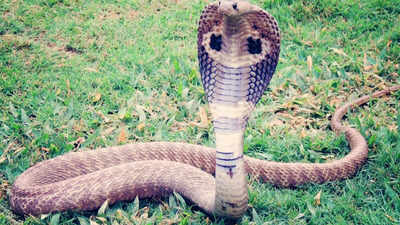ARTICLE AD BOX

King Cobra mystery solved after 188 years! Scientists reveal it’s actually four deadly species
For nearly two centuries, the mighty king cobra revered in folklore and feared in the wild was thought to be a single, monolithic species: Ophiophagus hannah. This fearsome serpent, capable of growing over 18 feet long and delivering a venom potent enough to kill a human in minutes, has captured imaginations across the globe.
But recent scientific evidence has shattered this long-held presumption.The king cobra is not one, but four separate species, according to a landmark paper published in the European Journal of Taxonomy on October 16, 2023. This breakthrough is the culmination of decades of genetic and morphological study, supplanting centuries of taxonomic convention and providing new insight into one of the world's most mysterious reptiles.
King Cobra mystery ends: Scientists officially name 4 distinct species
The origins of this revelation are in a 2021 study that exhaustively analysed DNA throughout the full known distribution range of the king cobra, as reported by Live Science. That genetic study found four distinct lineages, but so far, those lineages have only been designated as "confirmed candidate species," without formal morphological proof and names.To add to that research, scientists consulted 153 museum specimens, studying their body forms, patterned scales, color, dentition, and banding. That combined morphological and genetic method has now resulted in formal classification of four species:
- Northern King Cobra (Ophiophagus hannah)
- Sunda King Cobra (Ophiophagus bungarus)
- Western Ghats King Cobra (Ophiophagus kaalinga)
- Luzon King Cobra (Ophiophagus salvatana)
The four King Cobras: A breakdown of the species
1. Northern King Cobra (Ophiophagus hannah)
- Range: Sub-Himalayas, eastern India, Myanmar, Indochina, and the Kra Isthmus of Thailand
- Features: Dark-edged yellow bands, 18-21 teeth, with an almost band-less head and neck
- Significance: This is most geographically distributed of the group and still keeps the original scientific name.
2. Sunda King Cobra (Ophiophagus bungarus)
- Range: Malay Peninsula, Sumatra, Borneo, Java, and Mindoro (Philippines)
- Features: Typically unbanded or narrow pale bands with dark margins; distinguished by body size
- Distinctive Trait: One of the most structurally homogeneous of the four, this species shows little banding in most specimens.
3. Western Ghats King Cobra (Ophiophagus kaalinga)
- Range: Western Ghats, India
- Features: Wide pale bands without dark edges; separable from O. bungarus by superficial differences
- Notable: It is the first endemic species documented solely in India's Western Ghats biodiversity hotspot.
4. Luzon King Cobra (Ophiophagus salvatana)
- Range: Luzon Island, Philippines
- Features: Angular pale body bands that are sharply different from the other species
- Unique Feature: Striking contrast and band structure distinguish it clearly from other lineages.
King Cobra split sparks race for region-specific antivenoms
According to Live Science, all four of these snakes continue to be among the most venomous reptiles on the planet.
King cobras inject a large amount of very powerful neurotoxic venom per bite, enough to kill a full-grown human being in less than 15 minutes. Previously, antivenoms were produced under the belief that there was only one species present.With the taxonomy being brought up to date, researchers hope this information can greatly enhance region-specific antivenom development and research. Targeted venom profiling can potentially result in safer and more effective antivenoms tailored to the actual snake species found in each region.“This is a huge leap toward understanding how to save lives from bites in different habitats,” said lead author Gowri Shankar Pogiri, founder of the Kalinga Foundation.
Scientists say more King Cobras await discovery
This research could just be the tip of the iceberg. According to Gowri Shankar and his team, published in Live Science, there could be other yet-to-be-discovered king cobra species hiding on other tiny islands throughout Southeast Asia and the Indian Ocean.
Researchers are already in the field testing whether other local populations are also distinct species.“We’re already studying some of these island groups,” Pogiri told Mongabay. “There’s a high chance we’re just scratching the surface.”
New cobras, new challenges: Conservationists sound the alarm
This discovery has vast implications beyond the lab and the clinic. Species identification is critical for conservation planning, particularly in biodiversity-rich but ecologically threatened regions like the Western Ghats and the Philippines.
Individualized conservation efforts can now be tailored for each newly identified species.Most of these snakes are already under stress from habitat loss, skin and medicinal poaching, as well as human-wildlife conflict. Separating the species could promote some to endangered or critically endangered levels on international conservation platforms.



.png)
.png)
.png)
















 10 hours ago
5
10 hours ago
5









 English (US) ·
English (US) ·